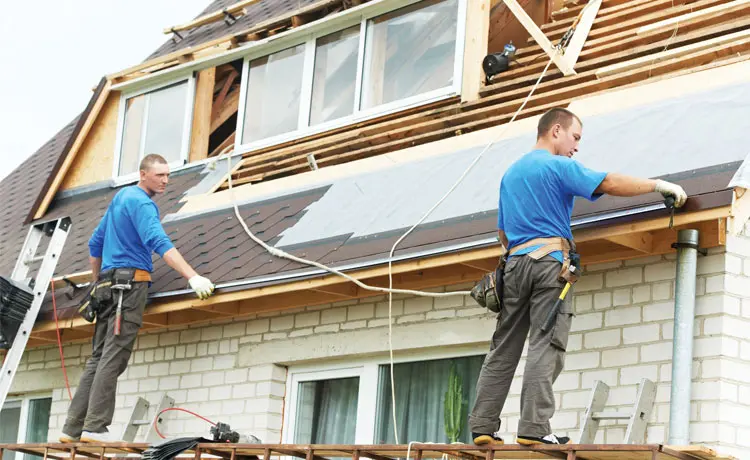Natural disasters often appear with little to no warning, and their presence is felt long after they’re over. They frequently leave behind devastating effects on communities, making recovery a gradual and challenging process. While returning home is a big step forward, getting back to “normal” can take some time. Below are some preliminary steps to share with members of your community as they work toward getting their homes – and their lives – back on track.
Before Entering Your Home
- Walk carefully around the outside of your home and check for loose power lines, gas leaks and structural damage.
- Do not enter if:
- You smell gas.
- Floodwaters remain around the building.
- Your home was damaged by fire and the authorities have not declared it safe yet.
If you have any doubts about safety, have your home inspected by a qualified building inspector or structural engineer before entering.
Going Inside for the First Time
- Enter carefully and check for damage. Watch for loose boards, slippery floors, broken glass, etc.
- Use a battery-powered flashlight to inspect a damaged home. Turn it on outside before entering – the battery may produce a spark that could ignite leaking gas, if present.
- Watch out for animals, especially poisonous snakes. Use a stick to poke through debris.
- Open cabinets cautiously. Beware of objects that can fall off shelves.
Things to Check
Roof, Foundation and Chimney Cracks
Check for structural damage. If it looks like the building may collapse, leave right away. Keep in mind that there may be hidden damage – especially in foundations.
Natural Gas
If you smell gas or hear a hissing or blowing sound, open a window and leave immediately. Until you’re sure there is no leaking gas or other flammable materials present, do not smoke or use candles, etc.
Broken or Frayed Wires and Sparks
Check the electrical system – but not if you’re wet, standing in water or unsure of your safety. If the situation is unsafe, leave and call for help.
Appliances
If appliances are wet, do not use them. Instead, turn off the electricity at the main fuse box or circuit breaker and then unplug them to let them dry out. Gas appliances need to be inspected, cleaned and have their gas controls replaced.
Water and Sewage Systems
Don’t use the toilets and the tap until you have checked for sewage and water line damage. Service damaged septic tanks, cesspools, pits and leaching systems as soon as possible. Check with local authorities before using any water (in case it’s contaminated).
Smoke Detector
Make sure that it is working. Test it a few times to make sure the battery is still good.
For more detailed steps to take, consult our Disaster Recovery Guide or our other handbooks.
Hiring Contractors
Depending on the extent of damage, you may need to hire someone to help repair your home. The Federal Trade Commission (FTC) and the Federal Emergency Management Agency (FEMA) offer the following tips:
Deal only with licensed and insured contractors.
Review the track record of anybody you’re thinking of hiring – consult the Better Business Bureau and Home Builders Association. Get recommendations from people you trust.
Take your time to sign the contract.
Get a written estimate that includes any oral promises the contractor made. Get a copy of the final signed contract before the job begins.
Don’t pay up-front.
Avoid any contractor who asks you to pay for the entire job up-front. A deposit of 1/3 of the total price is standard procedure. Pay only by check or credit card – and pay the final amount only after the work is completed to your satisfaction.
Get a second opinion.
Ask a knowledgeable friend, relative or attorney to review a home repair contract before you sign it.
One Step at a Time
As you move forward in your home’s recovery, make sure to also take good care of yourself. People respond to stress differently – and having a strong stress reaction or depression after a disaster may happen. Check in with yourself often and make sure to get help if you need it. For immediate support, call the National Disaster Distress Helpline at 800-985-5990 or National Suicide Prevention Lifeline at 800-273-TALK (8255). For more information on various family and community preparedness products available to purchase for your citizens and leaders, browse the QuickSeries® library of guides, including Disaster Recovery, Resilience After Disaster and Disaster Preparedness.
